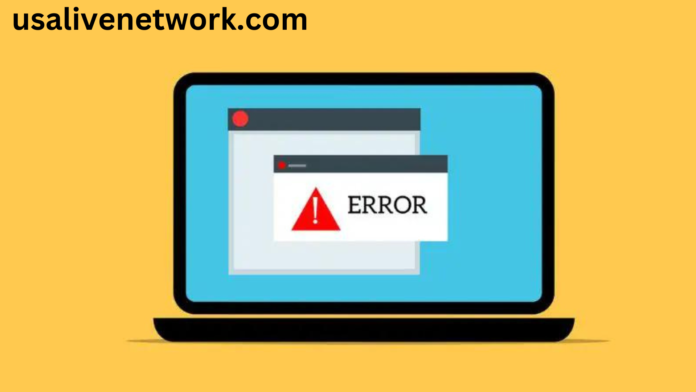Introduction
In the unique universe of programming advancement. it is unavoidable to experience mistakes. One such blunder that designers frequently wrestle with is connected with the errordomain=nscocoaerrordomain&errormessage=could not find the specified shortcut.&errorcode=4, explicitly distinguished by the mistake message “couldn’t track down the predefined alternate route” and blunder code 4. Understanding the subtleties of this mistake is pivotal for the two engineers and clients to guarantee the smooth working of utilizations.
Grasping the NSCocoaErrorDomain
The NSCocoaErrorDomain is a space utilized in Cocoa blunder detailing, a structure in Apple’s macOS and iOS working frameworks. It epitomizes mistakes connected with object-arranged programming in Cocoa applications. At the point when applications experience issues, they frequently produce mistake codes inside unambiguous spaces. giving bits of knowledge into the idea of the issue,
Unraveling the Blunder Message
The mistake message “couldn’t track down the predefined easy route” is an obvious sign that a predetermined alternate way, critical for the application’s usefulness, is difficult to reach. This prompts designers to explore further. taking into account the likely causes and arrangements.
The Meaning of Mistake Code 4
Mistake codes act as a guide for designers. assisting them with pinpointing the specific idea of the issue. On account of mistake code 4 inside the errordomain=nscocoaerrordomain&errormessage=could not find the specified shortcut.&errorcode=4, it shows a particular issue connected with the inaccessibility of the assigned easy route.
Normal Situations Prompting This Mistake

Alternate route Detail Issues
One normal reason is a mistake in determining alternate routes inside the application’s code. Designers need to fastidiously survey and check the alternate way setups to correct this issue.
System Compatibility Problems
errordomain=nscocoaerrordomain&errormessage=could not find the specified shortcut.&errorcode=4 compatibility issues with the operating system or other system components. Ensuring that the application aligns seamlessly with the system environment is crucial for preventing this error.
Troubleshooting Steps
Verifying Shortcut Specifications
Developers can start by examining the code responsible for defining shortcuts, This involves cross-referencing the specified shortcuts with the application’s requirements and ensuring accurate implementation.
Checking System Compatibility
A thorough analysis of the application’s compatibility with the operating system and other dependencies is essential. Developers should update libraries and frameworks to match the system’s requirements.
Updating Software and Drivers
Outdated software and drivers can contribute to compatibility issues. Regularly updating both the application and the underlying system components is a proactive step in mitigating Error Code 4,
Seeking Support from the Community
When the troubleshooting process becomes challenging, developers can turn to online forums and communities. Sharing experiences and seeking advice from fellow developers can provide valuable insights and solutions.
Avoiding the Error in Future Projects
Learning from past experiences is pivotal. Developers should document solutions and implement preventive measures in future projects, reducing the likelihood of encountering similar errors.
Real-world Examples
Exploring real-world examples of applications facing NSCocoaErrorDomain with error code 4 sheds light on how developers tackled and resolved the issue, offering valuable insights for others in the community.
The Impact on User Experience
Understanding the user perspective is crucial. Error messages can be frustrating for users, affecting their overall experience with the application. Minimizing such errors is essential for maintaining user satisfaction.
Developers’ Perspectives
Developers share their experiences and strategies for handling NSCocoaErrorDomain errors, offering a glimpse into the challenges and solutions encountered in the development process.
Learning Assets for Mistakes Taking care of
Ceaseless learning is key in the consistently advancing field of programming improvement. Featuring assets for dominating blunder taking care of, including documentation and instructional exercises, enables designers to improve their abilities.
Conclusion
All in all, fathoming the complexities of errordomain=nscocoaerrordomain&errormessage=could not find the specified shortcut.&errorcode=4message “couldn’t track down the predetermined easy route” and mistake code 4 is fundamental for designers expecting to make powerful applications. By tending to the main drivers, executing investigating steps, and gaining from encounters, engineers can improve their mistake taking care of capacities.
Frequently Asked Questions (FAQs)
What causes NSCocoaErrorDomain blunders?
NSCocoaErrorDomain blunders can originate from different sources, remembering issues for easy route particulars and framework similarity issues.
How might designers investigate Mistake Code 4?
Engineers can investigate Blunder Code 4 by confirming alternate way particulars, really taking a look at framework similarity, and refreshing programming and drivers.
Are there preventive measures for staying away from these mistakes?
Indeed, designers can keep away from NSCocoaErrorDomain blunders by archiving arrangements, carrying out preventive estimates in later undertakings, and remaining informed about prescribed procedures.
Could clients at any point fix this blunder all alone?
By and large, NSCocoaErrorDomain blunders require mediation from designers. Clients can report the issue, however a designer’s mastery is normally required for goal.
How does this blunder influence application execution?
This blunder can influence application execution by thwarting the usefulness related with the predefined easy route, prompting a not exactly ideal client experience.

